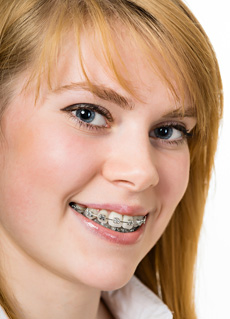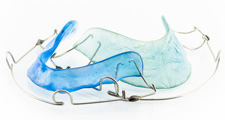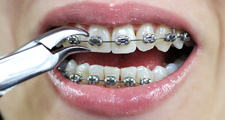
FAQ
I am an adult seeking orthodontic treatment--what are my options as to the type of braces?
Adult orthodontics is becoming increasingly accepted and practiced by qualified orthodontists who feel that is never to late to correct malocclusion (bad bite) in order to functionally and aesthetically improve your smile. Your options include metal braces, ceramic braces (tooth-colored often) and clear braces such as Invisalign braces. Clear braces are popular among adults who do not wish to have the stigma of braces affect their professional and social lives. If you prefer not to undergo the long orthodontic treatment of braces, you may want to consider "instant" orthodontics which is actually the application of porcelain veneers in two to three visits with a cosmetic dentist.
How do I find an orthodontist who will provide sound orthodontic treatment for my children?
When visiting any orthodontist, ask if he or she is board certified by the American Board of Orthodontics and/or a member in the American Association of Orthodontists. A board certified orthodontist must have at least two years of training in an accredited orthodontic program; pass an orthodontics examination; and have at least two years of clinical experience. Orthodontists that are members in the AAO must have completed at least two years of study in an accredited orthodontic residency program. Specially certified orthodontists of this nature are prudent choices for care of your children's dental well-being.
What is malocclusion and are there different forms of dental malocclusion?
As divided by the Angle Classification of Malocclusion ("bad bite"), dental malocclusion comes in the form of Class I Malocclusion (normal bite/occlusion but the teeth are crowded or abnormally positioned), Class II Malocclusion (the top teeth overlap the bottom teeth) or Class III Malocclusion (the bottom teeth overlap the top teeth). Orthodontists treat malocclusion with fixed and removable orthodontic appliances such as braces, elastics and rubber bands.
How much do braces cost?
Dental braces cost between $4,000 and $9,000 depending on the region of the specific orthodontist, the amount of adjustment required throughout orthodontic treatment and type of braces chosen. Ceramic brackets that are tooth-colored and thus less noticeable may raise the braces price about $200. The cost of clear braces such as Invisalign orthodontics is comparable to braces if mild to moderate movement of teeth is all that is required to achieve a suitable occlusion (bite). If the orthodontic treatment is more involved (perhaps the patient has Class II or Class III Malocclusion), the cost of Invisalign increases. Patient's may opt for orthodontics financing or receive some coverage from their dental insurance for orthodontic appliances.
What is proper care of dental braces?
Ask your orthodontist to recommend certain techniques for proper orthodontic appliance care. Braces toothbrushes, floss threaders, fluoride toothpaste and fluoride mouthwash are all means of maintaining good dental hygiene during orthodontic treatment. Remember that failing to remove easily trapped plaque from around the gums, teeth and orthodontic appliances can lead to gingivitis, decalcification of tooth enamel and periodontal disease. Patients with braces or retainers should also avoid sticky food that may damage wires and brackets.


